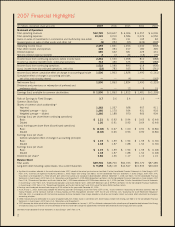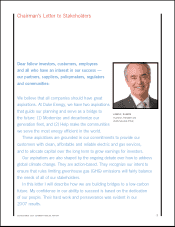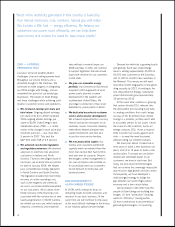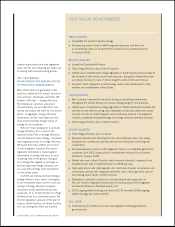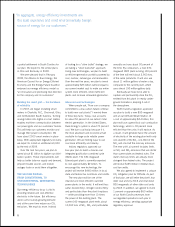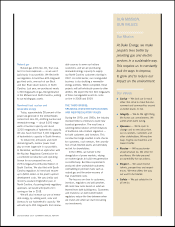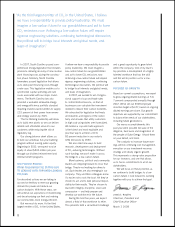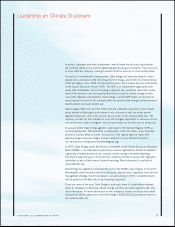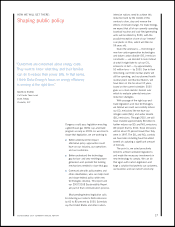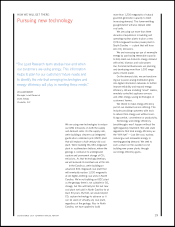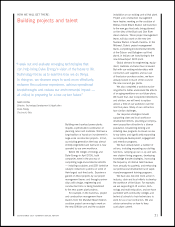Duke Energy 2007 Annual Report Download - page 13
Download and view the complete annual report
Please find page 13 of the 2007 Duke Energy annual report below. You can navigate through the pages in the report by either clicking on the pages listed below, or by using the keyword search tool below to find specific information within the annual report.
DUKE ENERGY 2007 SUMMARY ANNUAL REPORT 11
Duke Energy is one of the largest electricity suppliers in North
and South America. We serve our retail and wholesale customers
reliably and affordably with approximately 40,000 megawatts of
electric generating capacity fueled from coal, nuclear, natural gas,
hydroelectric and a growing portfolio of renewable energy. In the
United States, about 70 percent of the power we generate today
comes from coal, which releases carbon dioxide (CO2) into the
atmosphere and is linked to climate change.
CO2 and most other greenhouse gases (GHG) have always
been present, keeping the earth hospitable for life by trapping
heat that would otherwise escape into space. We know this as
the greenhouse effect. Since the industrial revolution, however,
the concentration of GHG in the atmosphere from the burning
of fossil fuels and other human activities has increased, trapping
more heat and amplifying the natural greenhouse effect.
A majority of the public and policymakers now believe that
the earth’s climate is changing, caused in part by GHG emitted
into the atmosphere from human activity.
As the third largest emitter of CO2 in the United States
— more than 100 million tons annually, the equivalent of
about 10 million cars on the highway — we realize we have
a special responsibility to address this issue.
Our focus is on finding practical solutions that will benefit
our stakeholders, our nation, our world and future generations.
“I monitor and analyze emerging
environmental issues for the company.
Over the last few years, the debate
over global climate change has
intensified. We believe it is no longer
a question of if Congress will enact
carbon limits, but when — and
what will be required. We have to be
ready to comply in a way that keeps
customer prices competitive.”
MIKE STROBEN
Director, Environmental Policy Analysis
& Strategy
Duke Energy
Charlotte, N.C.
BUILDING BRIDGES TO A LOW-CARBON FUTURE:
Where we are now



